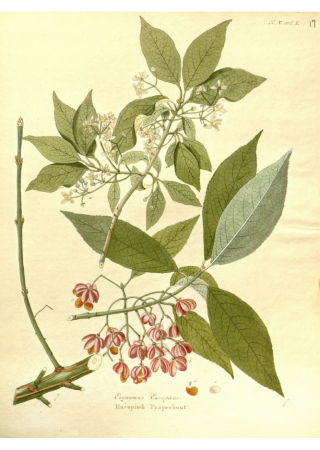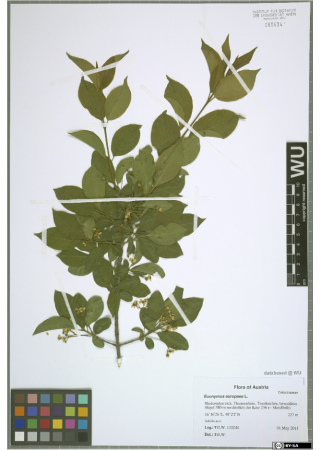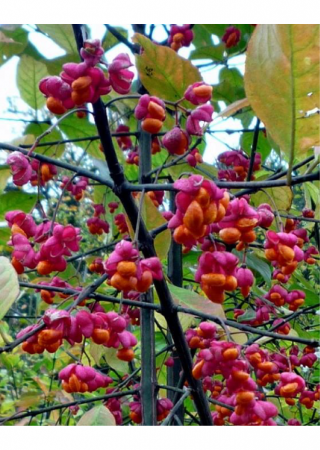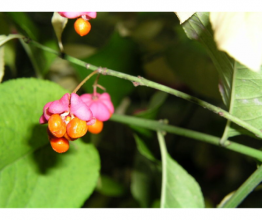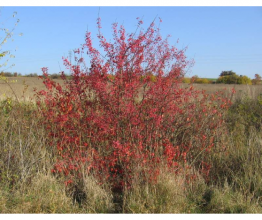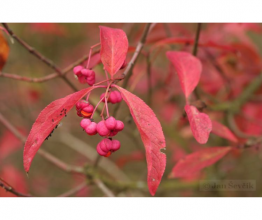European spindle
- ...charcoal from spindle wood is used in manufacturing painting supplies and gunpowder?
- ...spindle seeds contain an oil that was used in poultices for treating skin ailments cause by parasites, ? It was especially effective against lice.
- ...the flexible wood was used to make canes?
- ...due to their glycoside content, oil extracted from spindle seeds was used as an agent to induce vomiting?
- ...cream made with spindle extract provides effective protection against ticks?
Basic information:
Division: - angiosperms (Magnoliophyta)
Class - eudicots (Rosopsida)
Maximum height - 6 m
Distribution - Europe
Type of poison - glycosides
Distinguishing marks:
Spindles are robust shrubs, even small trees, reaching a height of up to 6 meters. They have upturned dark green stalked leaves with serrated edges. The plant blooms in May-June, with small yellow-green flowers nestled in the leaves. The pods, red and generally four-chambered, appear in autumn.
Spindle is not a particularly well known wood. It is found all over Europe in well-lit deciduous forests, and shrub growths along roads. It is often planted as a decorative plant in parks. It bears red pods in the fall, which often attract the attention of children. These burst open when ripe and release white seeds with an orange coating. The poison includes several glycosides: evobioside, evomonoside, evonoside. Cases of poisoning occur often in children, after ingesting the bright red pods. 30 pods are a fatal dose for an adult. Poisonings have even been recorded in carpenters working with spindle wood. Symptoms are nausea, dizziness, strong stomach pains, vomiting and diarrhea. Severe cases can include unconsciousness and kidney failure. Initial symptoms appear 12-18 hours after ingestion, and if not treated, end in circulatory failure.

